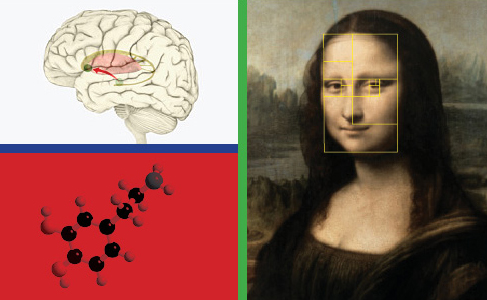By Dr. Kenneth Atchity
Character is the essence of drama, the primary mechanism from which compelling action arises to hold audiences in thrall. In all media from epic to play to novel to screenplay, great dramatists have been applauded for their ability to create memorable characters: Hektor bidding farewell to his wife and infant son on the wall of Troy in Homer’s Iliad; Lear, tossing away a kingdom to test the meaning and limits of love; Ahab, willing to risk his life and the lives of his men to avenge himself against Moby Dick; or Kane, dancing through hubris to self-destruction in Orson Welles’ masterpiece.
The creation of memorable characters is both the most elusive and the simplest task of the dramatist—the act in which he or she melds the workings of conscious craft and unconscious inspiration.
How is a dramatic character “born”? Like Athena from the head of Zeus, a character is born straight from the writer’s head--without benefit or burden of the tedious normal process of childhood and adolescence.
But how does a writer create a character full-blown? There are probably as many answers to this question as there are storytellers, but the formula I keep coming back to is, “What would happen if a character like this found himself involved in a situation like that?” What would happen if a character that trusts his father above all but loves his mother more found out that his father may have been murdered with her cooperation? Explore this in a dark mood, and you have Shakespeare’s Hamlet. Splash was created from the question, What would happen if a man who glimpsed a mermaid long ago and never stopped thinking about her discovered she had left the sea to find him because she’d never stopped thinking about him?
William Faulkner’s process was to allow a character to haunt him, to incarnate in his mind from repeated visitations. Instead of trying to write something the first time he glimpsed the character, he ignored it until it kept coming back to pester him. Then he began asking questions, questions based on observation of the character’s image in his mind: a young girl, with muddy underpants and unscraped knees, up a tree, watching a funeral through the window of a big house:
Why were her pants muddy?
Why was she up this tree?
Why were her knees unscraped?
Why was she looking in on the funeral from outside?
Whose funeral was it?
By the time he’d listed these, and more, questions, he had already begun discovering answers. When he had enough answers, he felt compelled to begin writing—in this case, The Sound and the Fury, from the character of Candace.
In editing and publishing DreamWorks with my colleague Marsha Kinder, we discovered that artists in all genres regularly create the condition for easy passage between the external real world and the internal world of dreams. That two-way passage, the well-trod path of both storyteller and shaman, is symbolized in Virgil’s Aeneid by “the gates of horn and ivory”; and in Miguel de Cervantes’ Don Quixote de la Mancha by the “cave of the Montesinos.”
The mysterious imagination, that seat of creativity that lies somewhere between the conscious and unconscious mind, is the infinite font from which the most memorable fictional characters spring. Productive writers have learned tricks to awaken the imagination, to incite it to do its job.
This book is a well-organized sleight-of-hand, a guide to tricking your imagination into creative action. The author includes concrete examples of how successful screenwriters and authors have accessed their dream factory, and gives practical step-by-step advice about how you can do it too. Her suggestions for “channeling your characters via dialogue” or taking your character to “a goal-setting workshop” are just two of the many tricks she suggests to open that passage to the world of the imagination whence characters are born.
The More-Personality System, which D’Vari developed in “clinical” encounters with writers over the years, is an innovative tool for jump-starting characterization when you’re faced with a blank page, as well as an instrument to sharpen characterization, add additional depth, nuance, and characteristics, assist with discovering a character's voice, discover potential conflicts between characters; and finally, a time-saving checklist to ensure that all characters in your story are diverse enough to draw and maintain an audience's interest. It can help you determine what the “this” is in the formula “a character like this.”
Some writers plot their story first, and then create a character to fit the story’s demands. In this scenario, the More-Personality can help them quickly add the flesh of back story to the character’s skeleton. Other writers find their characters through dreams, or via an intriguing person they meet, see, or read about and can use the More-Personality system to balance their character and see their character in a more objective light.
In my own books on writing, A Writer’s Time: A Guide to the Creative Process, from Vision through Revision, How to Publish Your Novel, and Writing Treatments That Sell: How to Create and Market Your Story Ideas to the Motion Picture and TV Industry, I outline the four dynamic elements from which fictional characters are constructed: motivation, mission, obstacles, and change. If these four elements are the skeleton of created character, D’Vari’s elements are the flesh that makes your characters appear to be real (when, in fact, they’re not).
D’Vari developed this system from her knowledge of the Enneagram, Jungian personality types, the Myers-Briggs system, and the development practices of the Hollywood studios. You’ll enjoy the self-quiz she’s constructed to let you figure out your own type, as well as the type of your characters, which will help you flesh them out and make them seem real. She introduces the
M = Mover (who moves fast, wants information fast, uses action oriented words)
0 = Observer (who’s analytical by nature)
R = Relater (who’s "people" oriented)
E = Energizer (who’s a storyteller, colorful, vibrant, outgoing)
She explains each of the four types in exemplary detail, using celebrity personalities and screen roles
for clear illustration. She includes exercises that allow writers to dig deep into their characters, as well as unique personality quirks associated with each type.
Using her system, you’ll be able to:
Understand how your character relates to other personality types in the story;
Ensure that you have a realistic sprinkling of different types in your story;
Understand your character's phobias and preferences, by his type;
Plot a more realistic developmental pathway to your character's goals;
Create more realistic obstructions to your character's goal; and
Devise more credible dialogue as your character will speak by type.
Of course, the point of any system is to get the motor running. You’ll begin creating your own shortcuts, your own exceptions, your own way of doings things the minute you put her excellent advice into action. It’s all about getting rid of writer’s block and getting your characters up and running.
What writers mean when they say, “My characters talk to me,” is that they’ve given them a chance to take dramatic shape in their minds by bringing the elements within each character that makes that character conflicted, and therefore dramatically involving, into focus. When a character is not focused, it lies inertly on the page like so many words. When it is focused, by having its external mission and internal conflict clear cut and reflected in the way it moves, speaks, and acts—audiences say, “Her characters come alive.”
That’s the goal of this book: to help you create characters that come alive.
_________________________________________________________________
Atchity (Yale Ph.D.) is a writer-producer-literary manager-professor-editor, whose Story Merchant companies (thestorymerchant.com) are Atchity Entertainment International (aeionline.com), for writers “ready for prime time”), The Writers Lifeline (thewriterslifeline.com), for writers “not yet ready for prime time), and The Creative Media Group for storytellers who’ve passed beyond prime time into becoming international brands. His clients, among them bestselling authors and screenwriters, include Governor Jesse Ventura, Ripley’s Believe-It-Or-Not!, Beyond Comics, and The Learning Annex.

























